On the night of 14 June 1984, a drunken Prime Minister Robert Muldoon staggered down a Beehive corridor and announced a snap election to a moustachioed, beige suit wearing press pack.
“It doesn’t give you much time to run-up to an election, prime minister,” one journalist asked.
Muldoon paused, then wobbled slightly. His thin lip pursed to form his trademark smirk. Then came the legendary slurred retort.
“It doesn’t give my opponents much time to run-up to an election does it?”
While the infamous “schnapps election”, and the constitutional turmoil that surrounded it, has lived on in the echelons of New Zealand political history, it is by no means the only – or even the worst – example of liquor-infused politics in this country.
In the past 160 years, members have been locked in rooms to remain sober for votes; they’ve scrambled atop parliament’s roof to lower bottles down chimneys; they’ve partaken in drunken fights in lobbies; or stumbled off a wharf into Wellington Harbour, among many other recorded cases.
Nowadays, parliament’s trying to be as family-friendly as possible. Forty-eight of the 120 MPs are women, infants are allowed inside the chamber, breastfeeding is accepted, the Prime Minister’s just had a baby, and there are plans afoot to build a playground on the lawn out front.
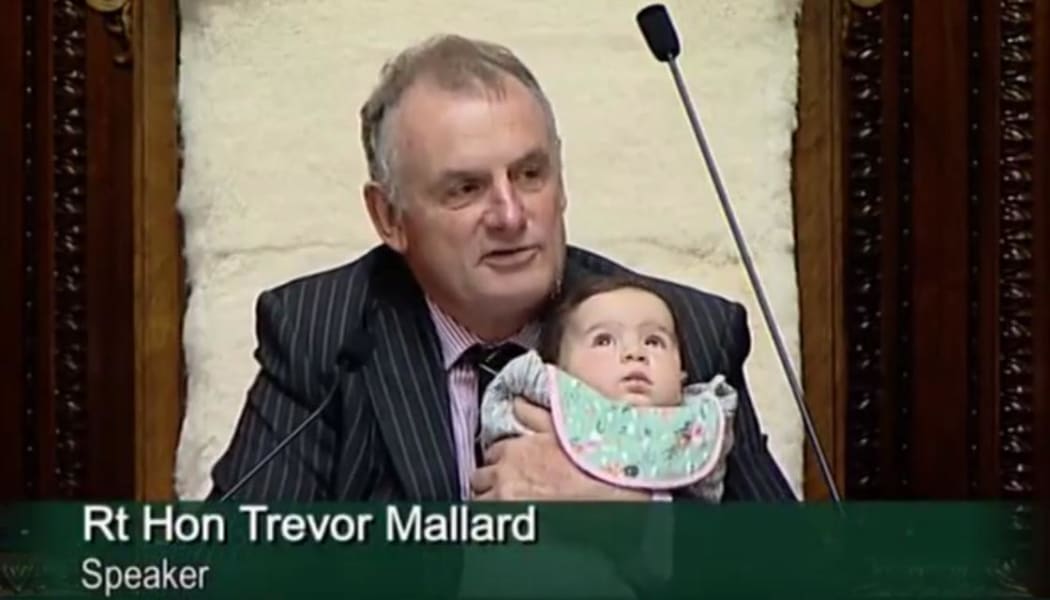
Parliament is more family friendly these days. The Speaker Trevor Mallard holds Labour MP Willow-Jean Prime’s three-month old baby Heeni while MPs debate a bill to extend paid parental leave. Photo: Parliament TV
But for much of the past couple of hundred years, New Zealand – and its parliament – was a realm of men. And in this society, its MPs and alcohol often went hand-in-hand – or bottle in hand.
If the colour of New Zealand history has been stained burgundy, then nowhere is that more vivid than in the history of parliament.
“Believe it or not, the very first legislation passed was legislation enabling the consumption of liquor in Auckland’s parliament buildings,” said John Martin, an historian who has researched parliament and its members extensively.
You read that right. In 1854, when the colony of New Zealand was granted self-government, the very first law passed by the very first members of parliament was to open a bar for themselves.
“When they all arrived in Auckland (the then capital) after rather arduous trips in ships they found that they were going to have to inhabit what was really not much more than a rudimentary barn with a little annex out the back which was where Bellamy’s was,” he said.
“As soon as they got down to work they passed this little piece of legislation that meant that they could enjoy themselves there.”
Before long, Bellamy's had earned itself a debaucherous reputation as a type of superior gentlemen's club, where the MPs would while away long nights consuming copious volumes of fine liquor.
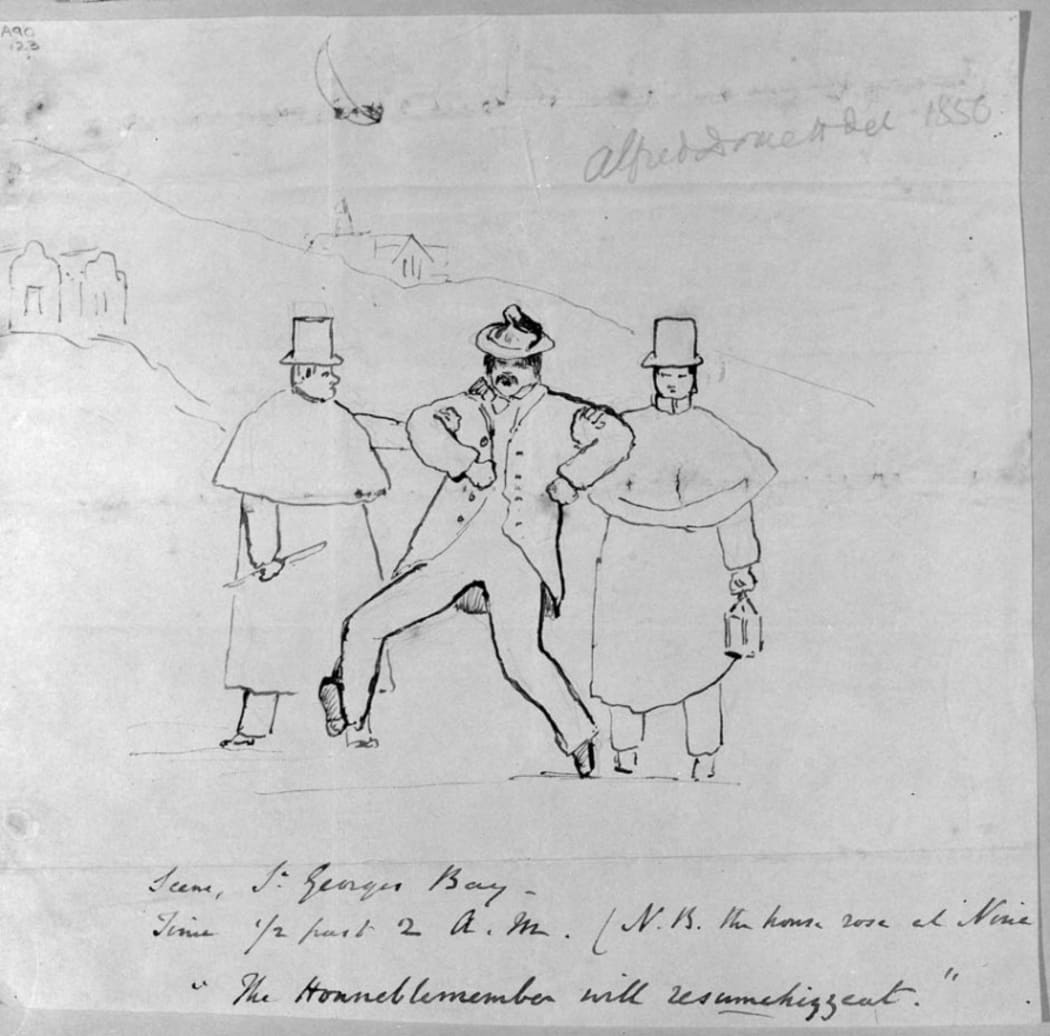
Alfred Domett's 1856 sketch of a parliamentarian, flanked by two police officers, staggering home from parliament worse for wear. Photo: Parliament website
“In colonial New Zealand, liquor was a very integral part of the culture of the New Zealand male, and of course all the MPs in those days were male,” Martin said.
“I guess they thought they’d attained a relatively privileged position and so they should have this additional privilege of easy access to liquor at good prices.”
The machinery for this was the House Committee, whose main role was to help with the running of parliament, its functions, and its facilities. But one of its most important roles – at least in the eyes of the early MPs – was to keep a good eye on Bellamy’s and its offerings.
“[It] used to have a regular routine of drawing up lists of the kind of liquor that they wanted and then sending across to Britain in the form of orders,” said Martin. “It would be shipped here in bulk, brought into parliament and served up at the bar.”
This continued when the parliament moved to Wellington in 1865. The old building, most of which is now the parliamentary library, was designed with two chambers and a reading room in the middle.
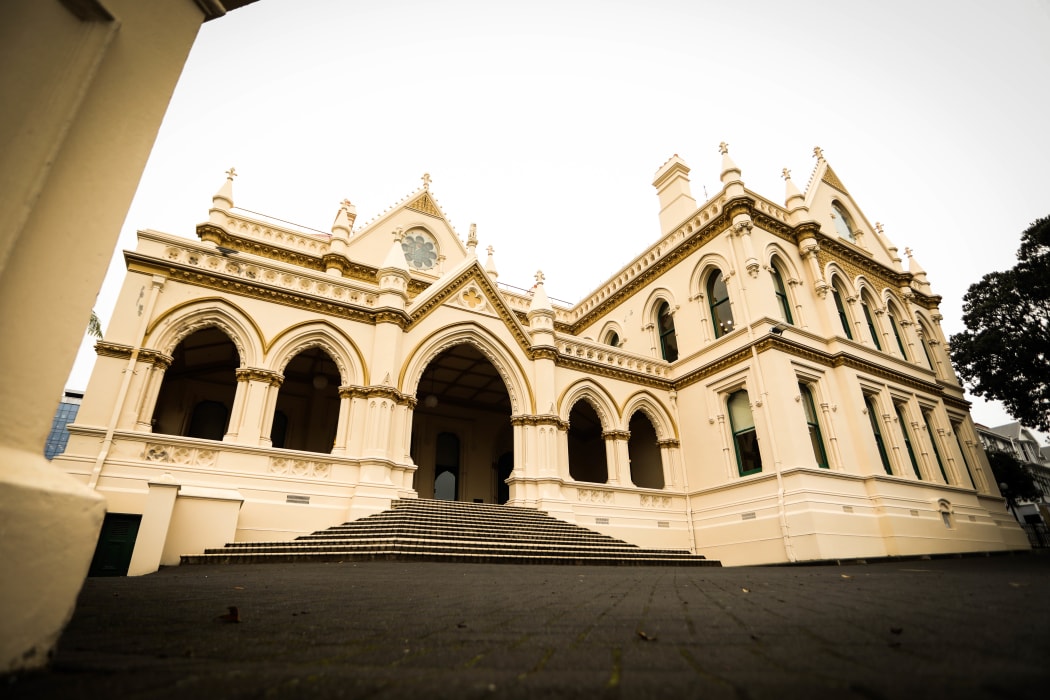
The Parliamentary library which used to house some of Parliament's offices. Photo: VNP / Daniela Maoate-Cox
In this room, with its small ornate interior, bourbon brown wood panelling, sherry red walls and frosted gin-like glass, parliamentarians would linger through the dead of the night around fireplaces to read, gossip, debate, horse-trade and, of course, drink.
In 1871, a single 60-day session got through 50-dozen bottles of champagne, a hogshead and 72 bottles of claret, four casks of sherry, a cask of port and 4 cases of wine – as well as numerous other ales, spirits and liqueurs.
Bellamy’s even stocked its own brand of liquor which was exclusive to members of parliament.
But working hard and drinking hard often led to some, well, unstatesman-like escapades.
There were instances where parties jostling for power would get an MP who could swing the vote drunk, before locking them in a room to stop them from going to the chamber to vote.
The most famous instance of this, said Martin, was Edward Jerningham Wakefield, who was a member for Christchurch in the 1870s and an alcoholic. Both parties were vying for his support, and so both set out to intoxicate him.
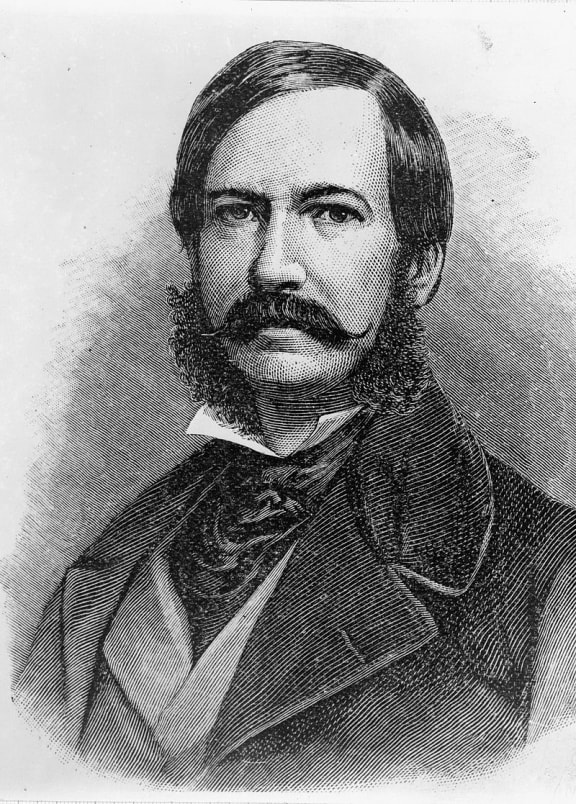
Not many people have had alcohol delivered via a chimney but Edward Jerningham Wakefield has. Photo: Public domain / Wikipedia
When he was proper lit, he was locked in a room ahead of the vote in the chamber. When the opposition got wind of that, some members climbed onto parliament’s roof and lowered bottles of liquor down the chimney to him, tied to a piece of string.
“When they finally unlocked the door he did make it to division and he voted against the people who had put him in the room,” said Martin.
Only a few years later, Wakefield – who was once an acclaimed author – died penniless in an Ashburton retirement home, aged 58.
While Wakefield’s is the most dramatic example of an alcohol-fuelled Wellington escapade to rival Weir House, it’s far from the only one.
In 1876, William Rees gave the longest speech ever made in the house – more than 24 hours, give or take a few meal (and probably grog) breaks – which was widely believed to have been fuelled by alcohol, Martin said.
“There were these carafes of water, but someone in changing over one of the carafes had clearly brought in some kind of gin or something because everyone noticed that this water was looking suspiciously cloudy,” he said.
“You’ve got stories of people misbehaving themselves as a result of liquor, fights in the lobbies. All sorts of things which seemed to be part of the culture.”
As their representatives knocked back liquor by the litre, to many it started to become clear that the early laws of the colony – and some of its most important decisions – were being made in a less than sober state.
In his 1957 pro-temperance book “Grog’s Own Country,” Conrad Bollinger wrote that by the end of the 19th century, “to be a parliamentarian, one necessarily had to be a toper.”
“The widespread suspicion that much of the legislation of this period was being considered in a miasma of whisky fumes probably served as a stimulus to the temperance movement,” Bollinger wrote.
“There would be something very annoying about the thought that decisions affecting the whole national life were in effect being made at a drunken party.”
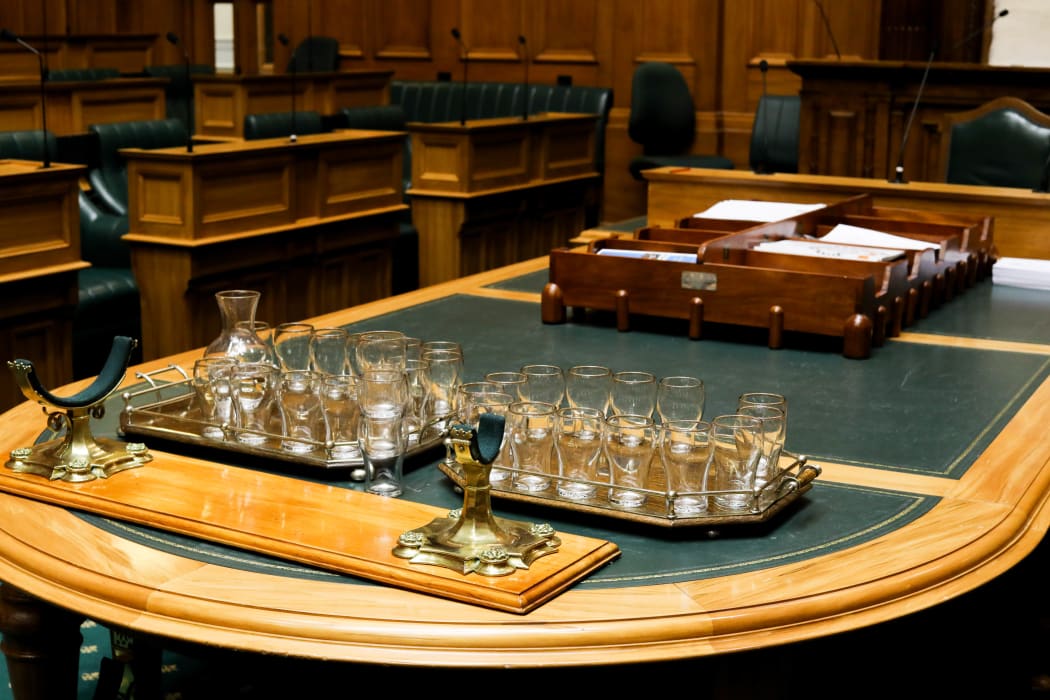
With the number of babies turning up in the House nowadays it's safe to assume these carafes hold only water (we hope). Photo: VNP / Daniela Maoate-Cox
So, what lead to the culture where New Zealand’s parliament was, as Bollinger wrote, a drunken party? Martin said it came down to both the prevalence of alcohol as both entertainment and coping mechanism in rough settler New Zealand, but also the compressed nature of parliament’s sittings in the 19th and 20th centuries.
Unlike today, with regular sessions spread over a year and scheduled sitting times within those sessions, parliament then was packed into a short period of a few weeks in the middle of winter. In those sessions, parliamentarians would rush through a mass of legislation in debates that would stretch into the early hours of the morning, or right through the night, for days on end.
“As a sort of antidote to that incredibly intense life, they wanted to relax in all sorts of ways,” said Martin. “They were living in often very cheap boarding houses or cheap hotels in the vicinity of parliament buildings, which didn’t really have a lot of entertainment available, and so they would use parliament’s facilities.”
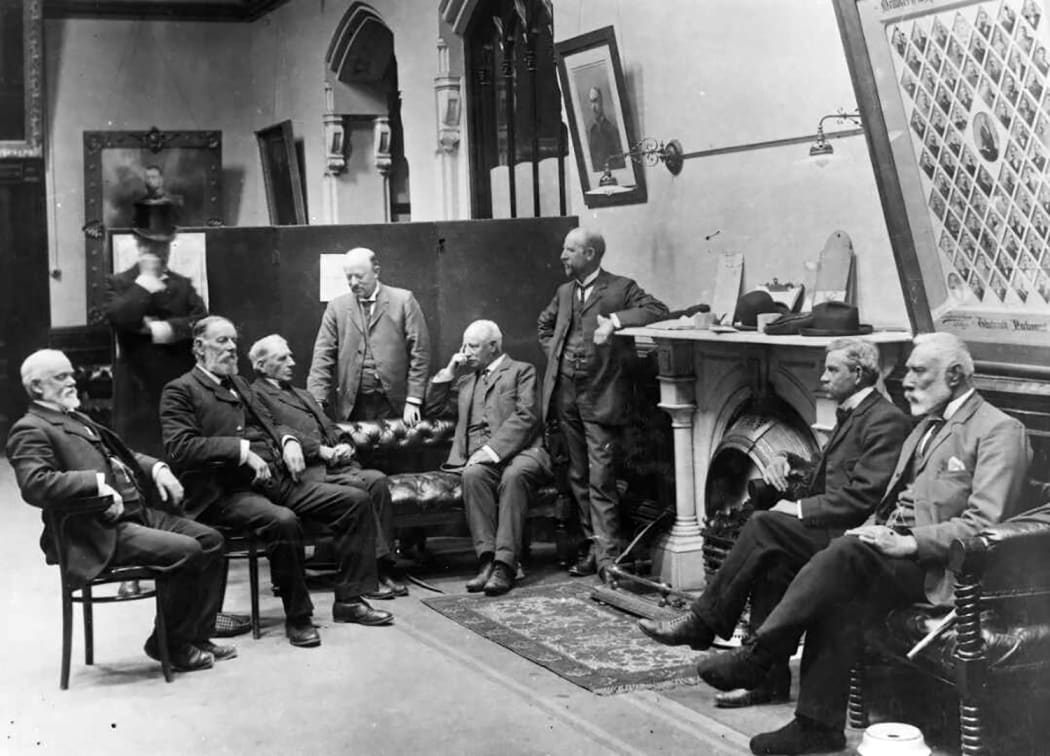
Members of Parliament gather in the reading room some time between 1891 and 1893. Photo: Parliament website
But an increasing sector of New Zealand’s society was growing sick of the antics. In the 1890s, one newly-elected MP from Canterbury was stumbling down the hill from Parliament in the middle of the night after a heavy drinking session. But, in his drunken haze, he mistook the lights of his boarding hostel for the lights at the end of the wharf.
He was rescued after several hours clinging to a piece of timber in Wellington Harbour.
“It was a slightly unfortunate episode from the point of view of those who wanted to continue to have access to alcohol,” said Martin. “Because it occurred at exactly the time the temperance movement was becoming really important in New Zealand.”
Sick of high rates of alcoholism, domestic violence and debaucherous raucousness on the streets, the temperance movement had gathered steam in New Zealand through the 1880s and ‘90s, and before long, the big party that was parliament came into focus.
The temperance societies also suspected that measures such as giving women the vote – which was in large-part driven by the temperance movement – were not getting a fair hearing in parliament’s patriarchal pit.
As the movement to quash New Zealand’s soaked culture gained momentum, elections started to see more pro-prohibitionist members elected.
However, they remained in the minority.
John Martin said most members wouldn’t have a bar of it, and fought to retain their privileged access to Bellamy’s.
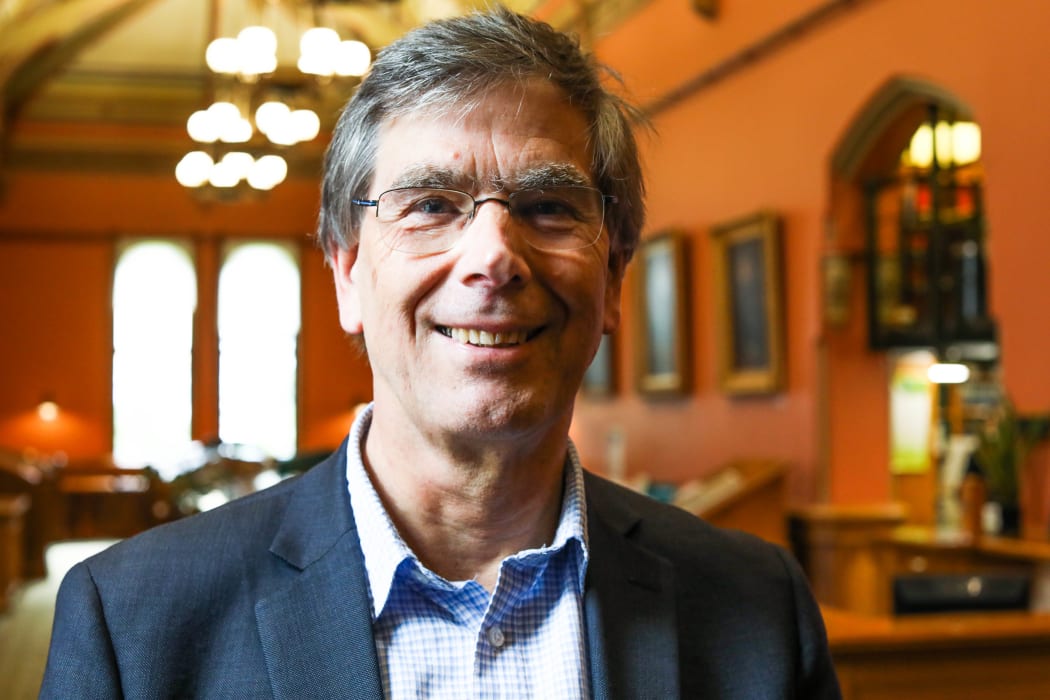
Historian John Martin Photo: VNP / Daniela Maoate-Cox
But forced to act, Premier Richard Seddon, a former West Coast publican who had tight links with the country’s booze barons, manufactured an ingenious system to calm the calls for prohibition at parliament.
Before each session, the members would vote in a poll on whether or not they wanted to retain their access to liquor. In those days, there were two chambers of parliament, and the legislative council was stacked with bewhiskered gentlemen from the past, who would almost certainly ensure continuance.
“[The polls] were always in favour,” said Martin.
Seddon’s invention lasted well into the 1960s, and parliament continued to exempt itself from the country’s liquor laws through the 20th century. MPs could drink on Sundays, and they didn’t even have to scramble for the notorious 6 o’clock swill, one of the few places that didn’t.
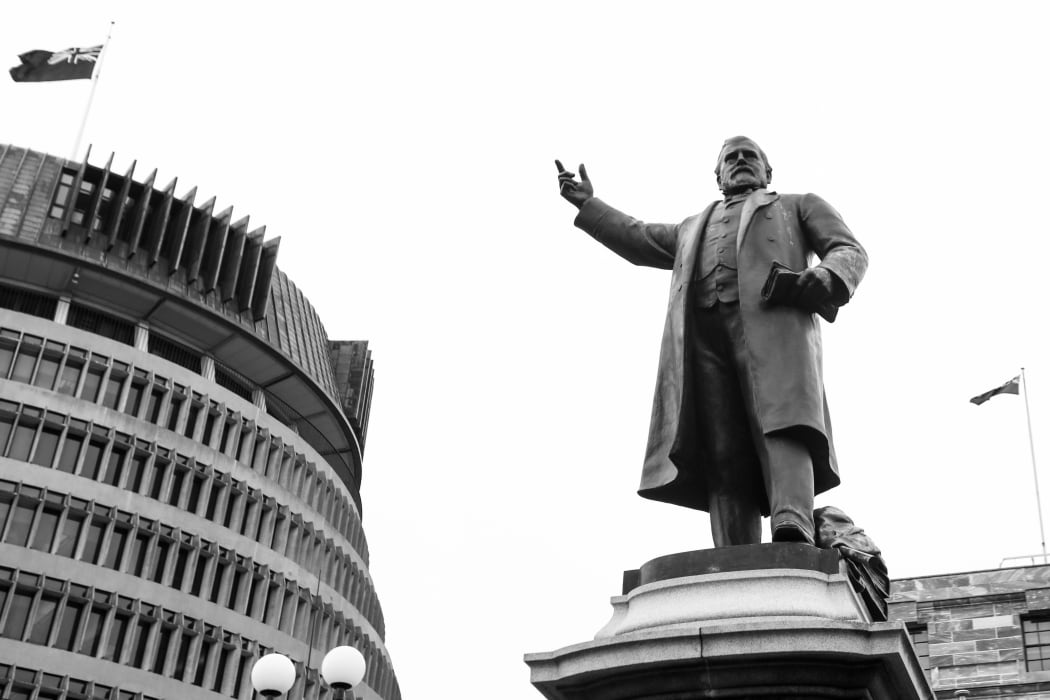
The statue of Premier Richard Seddon in front of Parliament. Photo: VNP / Daniela Maoate-Cox
When former Labour MP John A Lee arrived in parliament in 1922, he found a building of big halls and lots of drinking – as he recalled in a 1975 RNZ Spectrum documentary.
“It’s safe to say that a large number of members of parliament stayed over for the weekend,” he said. “Bellamy’s on Sunday night generally had good gatherings.”
“I think there was more discussion among members,” recalled Lee, who was famously dumped from the first Labour government of Michael Joseph Savage in 1940.
“Old [William] Massey had this idea that it was bad for members to have individual rooms because it led to plotting and planning and little cliques.”
“Seddon had the same idea that all the members of his party should be herded into one room so that everybody could hear what was going on,” he said.
In the mid-20th century, as New Zealand’s society shifted away from the male-dominated, alcohol-induced culture of its colonial days, parliament’s habits lagged far behind. Bellamy’s remained an institution, and MPs continued to drink hard.
Well into the 1980s, drunken MPs were semi-regular bait for scandal, with regular accusations of drunkenness in the House.
“They wanted to get at the grog cabinet,” shouted National MP Jim Bolger in one 1987 exchange over an incident in the Chatham Islands. “The only excuse we can offer is the one that’s been given to me, and that is that they were stone cold drunk.”
Labour MP Richard Prebble fired back in the same exchange: “I remember a National Party Prime Minister who every Thursday used to drink a bottle of gin, then his staff used to have to go down to the basement, let his tyres down on his car to prevent him from driving out of the building.”
But even at that time – only 30 years ago – it was still a male-dominated culture, where the bottle was omnipresent. Martin said what is now the Grand Hall, a large room just outside the debating chamber which is now used for functions, was then a members’ lounge with a bar and billiards tables.
“It was pretty tough for women to even walk through it, let alone inhabit it,” he said. “Helen Clark in the 1980s said she felt that pressure of opprobrium by merely going through the grand hall.”
Martin said that, finally, in the 1980s, things started to change – aided in part by Sir Geoffrey Palmer’s reforms to parliament’s schedule and sitting times, but also the fact that it finally started to catch up with society – albeit a couple of decades late.
“Parliament was rather slow, there was a bit of a lag. But it had to catch up, and society was changing dramatically in the 1960s and 1970s, so this was a slightly lagged reflection of that,” he said.
“The men had had a good go in parliament for more than 100 years, hadn’t they? Maybe it was time.”


